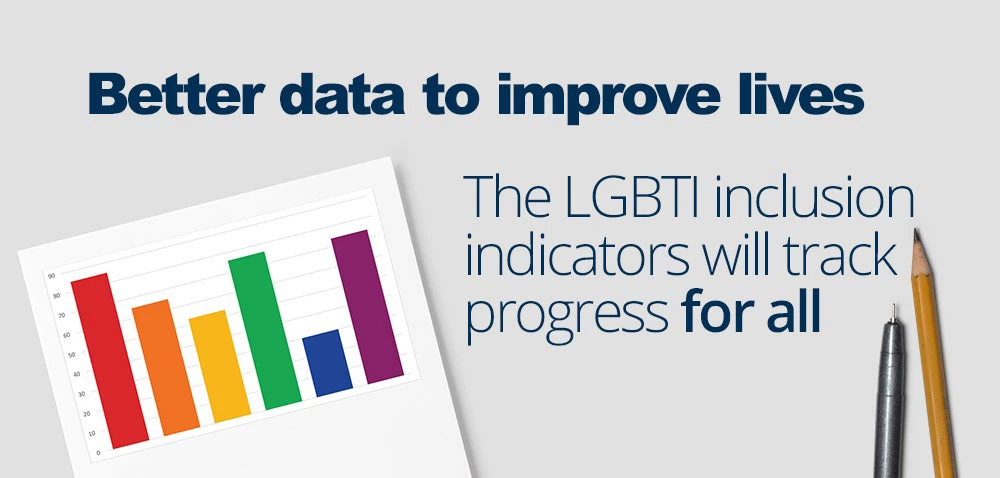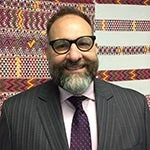The World Bank is developing a global standard for measuring countries’ inclusion of LGBTI individuals.

They laughed in our faces … but then we showed them the data
By the early 1990s, Dr. Mary Ellsberg had spent years working with women’s health in Nicaragua. Armed with anecdotes of violence against women, she joined a local women’s organization to advance a bill criminalizing domestic violence.
When presented with the bill, lawmakers “pretty much laughed in our faces,” she explained in a 2015 TEDx talk. “They said no one would pay attention to this issue unless we got some ‘hard numbers’ to show that domestic violence was a problem.”
Dr. Ellsberg went back to school and wrote her doctoral dissertation on violence against women. Her study showed that 52% of Nicaraguan women had experienced physical or sexual abuse by an intimate partner. Subsequently, the Nicaraguan parliament unanimously passed the domestic violence bill.
Later, the World Health Organization used Dr. Ellsberg’s indicators to measure violence against women in countries across the world, which showed the global magnitude of the problem.
“One out of three women will experience physical or sexual abuse by her partner,” Dr. Ellsberg said. Because of the data, “violence against women is at the very top of the human rights agenda.”
Dr. Ellsberg knew that domestic violence was a problem, but it was data that prompted leaders to combat the issue.
Similarly, there are plenty of documented cases of discrimination and abuse against lesbian, gay, bisexual, transgender, and intersex (LGBTI) people. But what’s the magnitude of the discrimination?
The World Bank, together with the United Nations Development Programme, and representatives from civil society, governments, the private sector, academia, and foundations, have for the past two years worked to address this data problem.
On December 13-15, this year, a final consultation will be convened in Washington, D.C., to finalize the first global standard for measuring societies’ inclusion of LGBTI individuals. These internationally agreed-upon indicators will cover health, education, civic and political participation, personal security and violence, and economic well-being.
LGBTI people experience discrimination and exclusion. But how big is the issue?
Anecdotally, we know that LGBTI individuals experience discrimination in health-care settings.
For example, the Washington Post published a story about a transgender woman in the United States who was denied urgent treatment once the doctor learned she was trans. “He fled the exam room, without examining me or obtaining any further history,” she wrote.
While there are some studies that measure LGBTI people’s overall health in select countries, no internationally agreed-upon indicators measure and compare instances of discrimination in health-care systems. That’s why we’ve included an indicator about health-care discrimination, along with nine other health indicators, as part of the LGBTI inclusion indicators.
In the area of education, we know from data collected in some places that LGBTI teenagers experience higher rates of high-school bullying than their peers. But we lack data on the issue from an overwhelming majority of countries.
Bullying is not the only issue facing LGBTI people in education. A friend of ours, Carlos from Costa Rica, described how his high school principal asked him to drop out of school mere weeks before graduation upon hearing rumors that he was gay.
With support from family, Carlos graduated anyway, but his story highlights an inclusion blind spot: at what rate do LGBTI people attain secondary education compared to the population at-large?
We’re creating indicators that measure bullying, educational attainment, and eight other aspects of LGBTI people’s inclusion in education.
A roadmap for inclusion, and a race to the top?

While our set of indicators will quantify, compare, and track LGBTI inclusion, it can also become a policy roadmap on how to create LGBTI inclusive societies.
The indicators define how we measure inclusion, meaning that policymakers can use them to engineer policies that improve a country’s standing in an inclusion index.
We hope that this will prompt a “race to the top.” The World Bank’s Doing Business report is a good example of how this works.
The report—which tracks indicators ranging from starting a business to enforcing contracts—has spurred a reform competition, as witnessed in Indian media when its sub-national report came out.
Like the Doing Business report, Dr. Ellsberg’s indicators have contributed to a global “race to the top” phenomena when it comes to women’s rights (although a lot of work remains).
Of course, we don’t know if an internationally agreed-upon set of LGBTI inclusion indicators will create a “race to the top.” But in the meantime, a global standard to measure inclusion will—for the first time—uncover the magnitude of exclusion, data that are crucial to achieving the United Nation’s Sustainable Development Goals, ensuring that “all human beings can fulfill their potential in dignity and equality.”
Dr. Ellsberg and the global women’s rights movement know that if you don’t define and measure the problem, you can’t fix it. In that spirit, let’s measure and achieve inclusion for all people, including lesbian, gay, bisexual, trans, and intersex individuals.
The authors Clifton, Toni-Joe, and Lucas work with the World Bank’s Sexual Orientation and Gender Identity (SOGI) team, which was established 2015. The team works to expand the evidence-base on the links between LGBTI exclusion and development through research and generation of data and analysis. The development of internationally agreed-upon LGBTI inclusion indicators is an important step in its mission.
Related links
- Three things we need to know about “SOGI”
- LGBTI in Thailand: New data paves way for more inclusion
- To fight discrimination, we need to fill the LGBTI data gap
- Learn more about our work on building sustainable communities
- Subscribe to our Sustainable Communities newsletter and Flipboard magazine




Join the Conversation